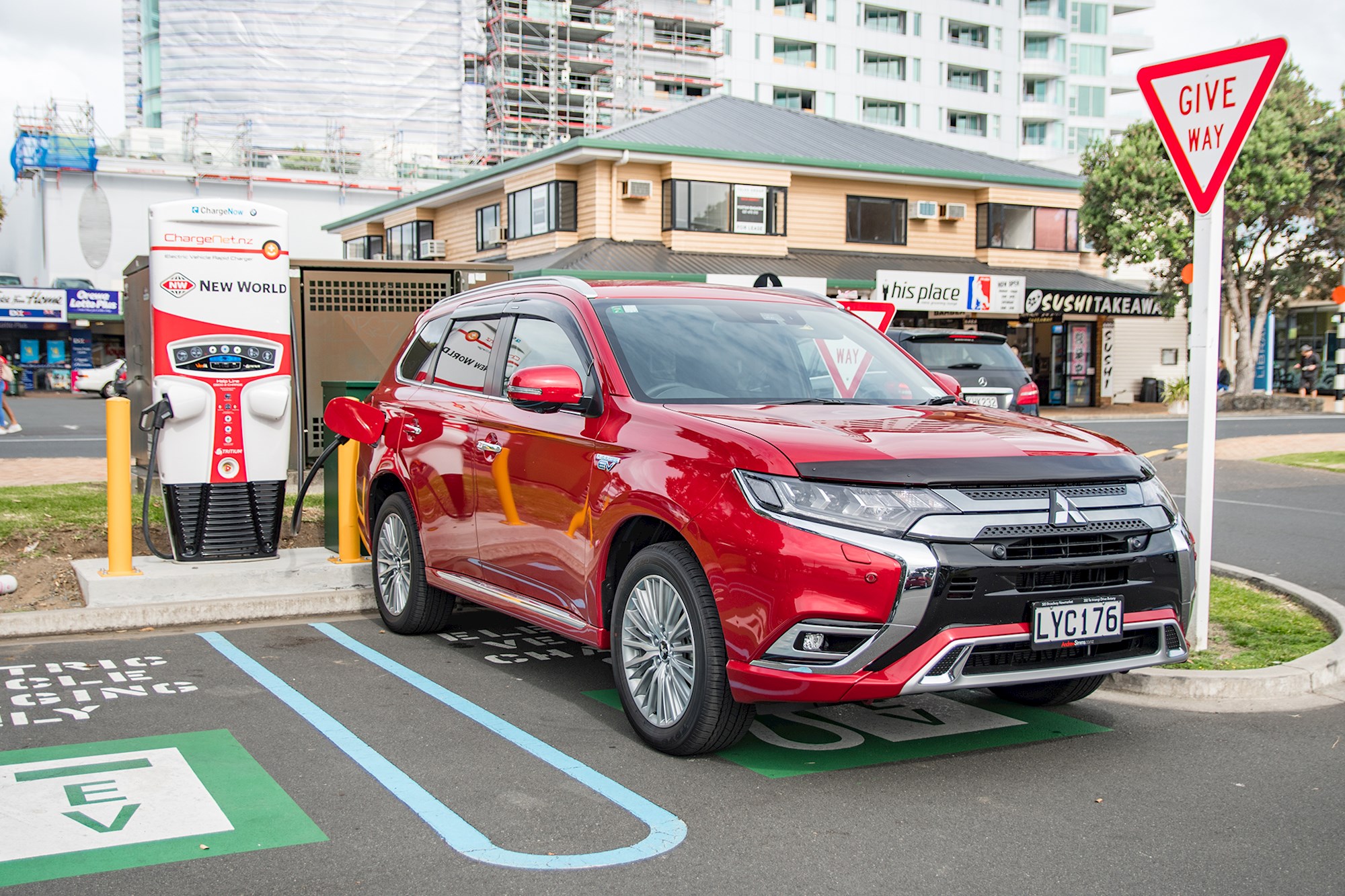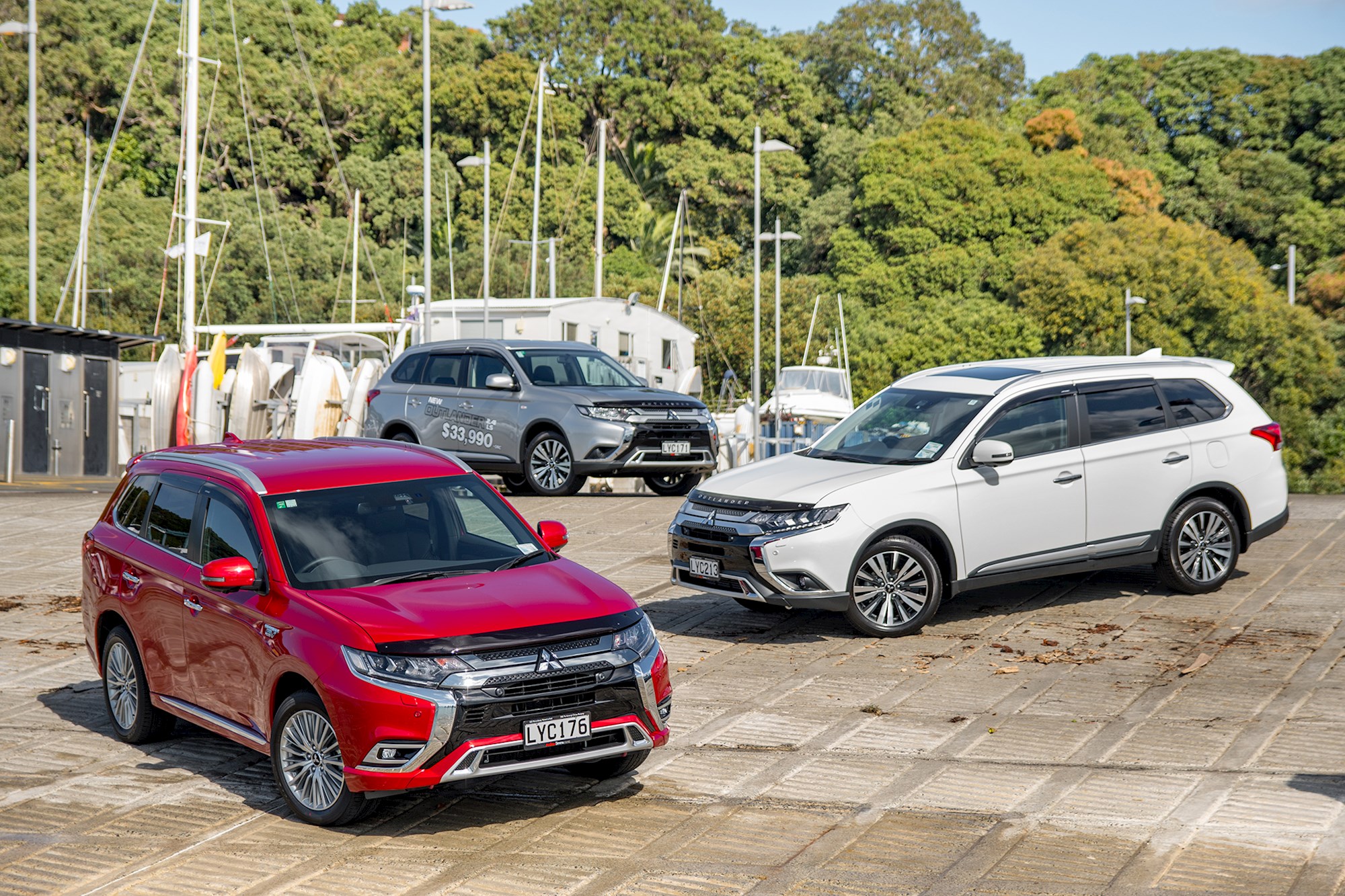Have your cake and eat it too: That’s the sales pitch with the Mitsubishi Outlander PHEV, or plug-in hybrid electric vehicle, which has just been updated with more urge.
As the name suggests, it’s an electric car that can be recharged and run on electricity but there’s also a petrol engine to allow longer drives without worrying about where to recharge.
The update hasn’t touched the exterior styling or the five-seat layout but has brought other changes, including increased battery capacity and new touchscreen and instrument cluster, among other detail tweaks inside.

Each model gets a 2.4-litre four-cylinder engine in place of the outgoing 2.0, which goes against the downsizing movement in the quest for better performance.
The front electric motor is unchanged, producing 60kW, and the rear motor steps up to 70kW, making acceleration snappier.
Snappy is a relative term — the claimed 0-100km/h time has been shaved by half a second to 10.5 seconds.
Acceleration is acceptable and useful at low speeds, with the torque of the electric motors shuffling things along sweetly.
Call for more and the modest 2.4 takes its time winding up, adding its 94kW to the outputs of the electric motors for easier hill climbing or overtaking, again in a leisurely way.
There’s a Sport mode, which keeps the petrol engine idling rather than shutting it down. It makes for quicker responses to any throttle applications, although things are still towards the more relaxed end of the mid-sized SUV spectrum once you’re doing more than 80km/h.
Unlike the propulsion updates, the Outlander PHEV’s suspension soldiers on unchanged.
It doesn’t take many bumps and curves to learn things aren’t always composed. The body will lean in bends when pushed, the tyres reach their limits early and the steering is light, to the point of being vague.
The suspension tends towards soft, albeit with some clumsiness over larger bumps. That puts the emphasis back on the partial electric drive.

Claimed average fuel use is 1.9L/100km, or about a quarter that of similarly sized SUVs. Over the previous model, however, it has increased by 0.2L/100km, or 12 per cent.
Such figures are academic. Drive it gently around town and you can easily use no fuel, instead relying on the 13.8kWh battery for about 50km of emissions-free motoring.
The power gauge in the dash shows you how to keep in the EV zone. Push the accelerator to the floor and the petrol engine eventually chimes in.
Once the batteries are depleted you’re relying solely on unleaded and will be slurping many times the 1.9L claim.
It’s a car best suited to predominantly shorter electric-only journeys with the occasional long distance adventure.
New Zealand
While it's yet to be confirmed, we expect that these updates will be reflected in upcoming local Mitsubishi Outlander PHEV models.
Mitsubishi New Zealand has been approached for comment and we await response.
- news.com.au




